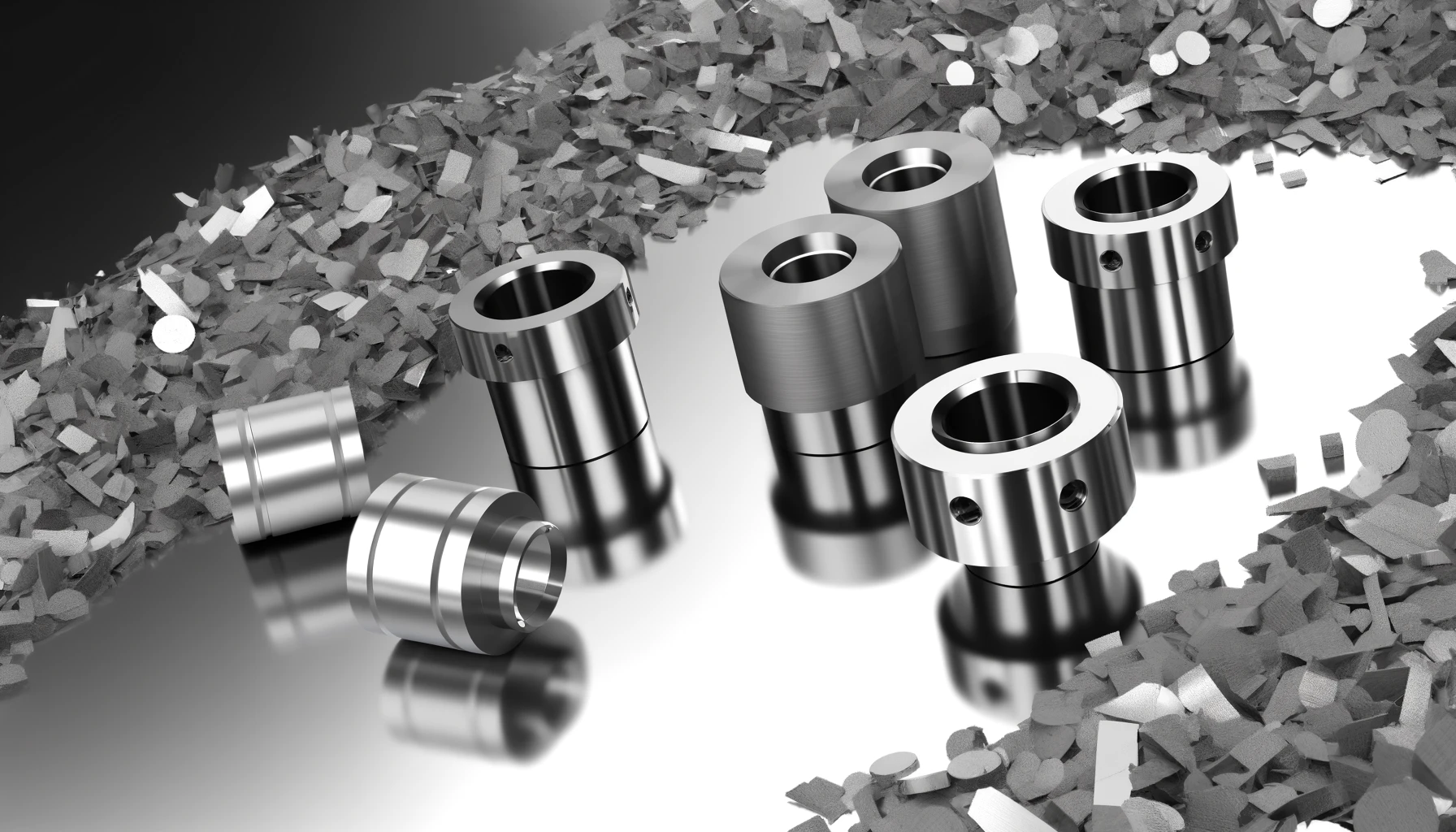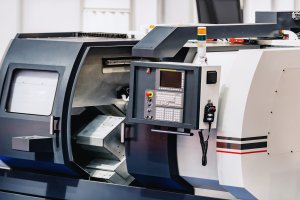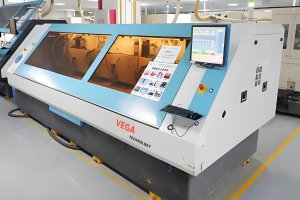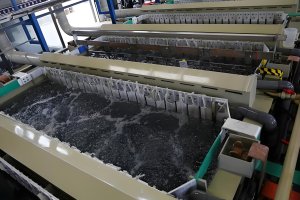Introduction to Waste Reduction in CNC Machining
In the competitive landscape of modern manufacturing, reducing waste is not just an environmental imperative but a significant economic necessity. For industries that rely heavily on CNC machining, like automotive and aerospace, the drive towards sustainability has prompted a reevaluation of production processes, particularly in the machining of materials such as aluminum. Aluminum is favored for its light weight and strength, but its CNC machining can be wastefully excessive if not managed correctly. This article explores how advanced CNC techniques are pivotal in minimizing waste during aluminum machining, offering insights into not only enhancing efficiency but also promoting sustainable practices.
aluminum cnc machining service
What Are the Major Sources of Waste in Aluminum CNC Machining?
The precision machining of aluminum is fraught with potential waste issues, stemming from both material inefficiencies and process methodologies. Key sources of waste include:
- Material Overuse: Often, more aluminum is used than necessary to ensure enough buffer for machining to the final product dimensions.
- Coolant Misuse: The misuse or overuse of coolants can lead to significant environmental and financial waste.
- Energy Inefficiency: CNC machines require substantial power, and inefficient use can lead to high energy consumption.
Understanding these waste sources is crucial for identifying areas where CNC machining processes can be optimized to reduce their impact significantly.
How Does Tool Optimization Lead to Reduced Waste?
Advancements in tool design have shown considerable promise in reducing the waste associated with CNC machining of aluminum. By optimizing the tool materials, geometries, and coatings, manufacturers can significantly extend tool life, improve cutting efficiency, and reduce the generation of scrap material.
Tool Material and Geometry Optimization:
- Material: Modern tools are made from materials like Polycrystalline Diamond (PCD) which, though more expensive, offer greater durability and precision.
- Geometry: Optimized tool geometries help in efficient chip evacuation, reducing the likelihood of re-cut and improving surface finishes.
Data Table: Tool Technology Comparison
| Tool Type | Material Hardness | Life Span | Efficiency | Waste Reduction |
|---|---|---|---|---|
| Standard Carbide | Medium | Short | Low | Low |
| Advanced PCD | High | Long | High | High |
| Coated Carbide | High | Medium | Medium | Medium |
This table illustrates how the use of advanced tool technologies like PCD can dramatically decrease waste by enhancing tool life and cutting efficiency, ultimately contributing to a lower total cost of ownership and less environmental impact.
By implementing these optimized tools, manufacturers not only improve their production efficiency but also contribute to broader sustainability goals by reducing the amount of waste generated during the machining process. In the next sections, we’ll explore how improvements in CNC machine programming and the application of high-precision machining further contribute to waste minimization in aluminum machining.
Can Improved CNC Machine Programming Reduce Aluminum Waste?
Innovations in CNC programming are critical for enhancing the efficiency and precision of machining processes, directly impacting the amount of waste produced. By refining programming techniques, manufacturers can significantly reduce the amount of aluminum wasted during the machining process.
Advanced Programming Techniques:
- Tool Path Optimization: Utilizing software that can optimize the sequence and path of the cutting tool reduces overcutting and unnecessary passes, which in turn minimizes aluminum waste.
- Adaptive Control: Programming that adjusts cutting conditions in real time based on feedback from the machining process helps prevent errors and reduce material waste.
Case Study: Automotive Parts Manufacturer
A prominent automotive parts manufacturer recently overhauled their CNC programming approaches, focusing on tool path optimization and adaptive control. This resulted in a 30% reduction in scrap aluminum, demonstrating the potential of advanced programming to significantly lower waste.
What Role Does High-Precision Machining Play in Waste Minimization?
High-precision machining is essential in reducing waste in CNC machining operations, especially when working with materials like aluminum, which is prone to damage and waste due to its soft nature.
Precision Machining Benefits:
- Reduced Rework: Achieving the correct dimensions and surface finish on the first pass significantly decreases the need for rework, which can be a major source of waste.
- Improved Material Utilization: Precise machining allows for tighter nesting of parts on a single aluminum sheet or billet, maximizing material usage and reducing waste.
Data Table: Impact of Precision on Waste Reduction
| Machining Accuracy | Scrap Reduction (%) | Rework Reduction (%) | Material Utilization (%) |
|---|---|---|---|
| Standard | 10 | 5 | 80 |
| High Precision | 30 | 20 | 95 |
This table highlights how high-precision machining not only improves the quality of the finished product but also enhances the overall efficiency of material use, thereby reducing waste significantly.
How Can Adaptive Machining Techniques Adjust for Material Variabilities?
Adaptive machining is another advanced technique that can dynamically adjust to inconsistencies in material properties or dimensions, which is particularly useful when machining aluminum—a material known for its variability in behavior under different conditions.
Adaptive Machining Dynamics:
- Real-Time Adjustments: Sensors and feedback mechanisms within the CNC machine adjust the machining parameters instantly to compensate for any detected anomalies in the material, thus ensuring consistent quality and reducing waste.
- Error Reduction: By continuously adjusting for material variability, adaptive machining reduces the occurrence of errors that can lead to material waste.
Case Study: Aerospace Component Production
An aerospace company implemented adaptive machining techniques in the production of critical aluminum components. This shift resulted in a 40% reduction in scrap material and a 50% reduction in production downtimes due to fewer errors and inconsistencies.
What Innovations in Machine Design Are Contributing to Sustainability?
The design and technological enhancements in CNC machines play a crucial role in promoting sustainability. Innovations specifically tailored to reduce waste and energy consumption can make a substantial difference in how aluminum is machined.
Innovative Machine Design Features:
- Energy Recovery Systems: Modern CNC machines incorporate energy recovery systems that capture and reuse energy from the machine operations, significantly reducing overall energy consumption.
- Efficient Chip Management: Improved chip management systems ensure that aluminum chips are efficiently collected and recycled, minimizing material waste.
Data Table: Sustainable Machine Designs
| CNC Machine Model | Energy Recovery | Efficient Chip Management | Overall Sustainability Rating |
|---|---|---|---|
| Model A | Yes | Standard | High |
| Model B | No | Enhanced | Medium |
| Model C | Yes | Enhanced | Very High |
This table showcases various CNC machine models and their features that contribute to sustainability by managing energy and material waste more effectively.
Future Trends in CNC Machining for Enhanced Waste Reduction
Looking ahead, the integration of cutting-edge technologies and methodologies is set to transform the landscape of CNC machining, especially in terms of reducing waste during aluminum machining. These future trends promise to further optimize manufacturing processes, making them more efficient and less wasteful.
Emerging Technological Advances:
- Artificial Intelligence (AI) and Machine Learning: AI will enhance predictive maintenance, optimizing tool life and reducing unexpected machine downtimes. Machine learning algorithms will improve cutting paths and parameters based on real-time feedback, decreasing material waste.
- Internet of Things (IoT) Integration: IoT devices will increase the connectivity of CNC machines, allowing for better data collection and analysis. This will lead to more informed decisions about process adjustments needed to minimize waste.
The application of these technologies not only promises improvements in precision and efficiency but also a significant reduction in the environmental impact of manufacturing processes.
Other Articles You Might Enjoy
- Aluminum CNC Machining Service for Custom Parts
Aluminum CNC machining stands at the forefront of modern manufacturing, epitomizing precision, versatility, and efficiency. With its widespread applications across industries ranging from aerospace to automotive and beyond, aluminum CNC…
- CNC Machining Materials: Acrylic vs. Polycarbonate for Transparent Components
CNC Machining: An Introduction and the Importance of Material Type Computer Numerical Control (CNC) machining is a manufacturing process where pre-programmed computer software dictates the movement of factory tools and…






